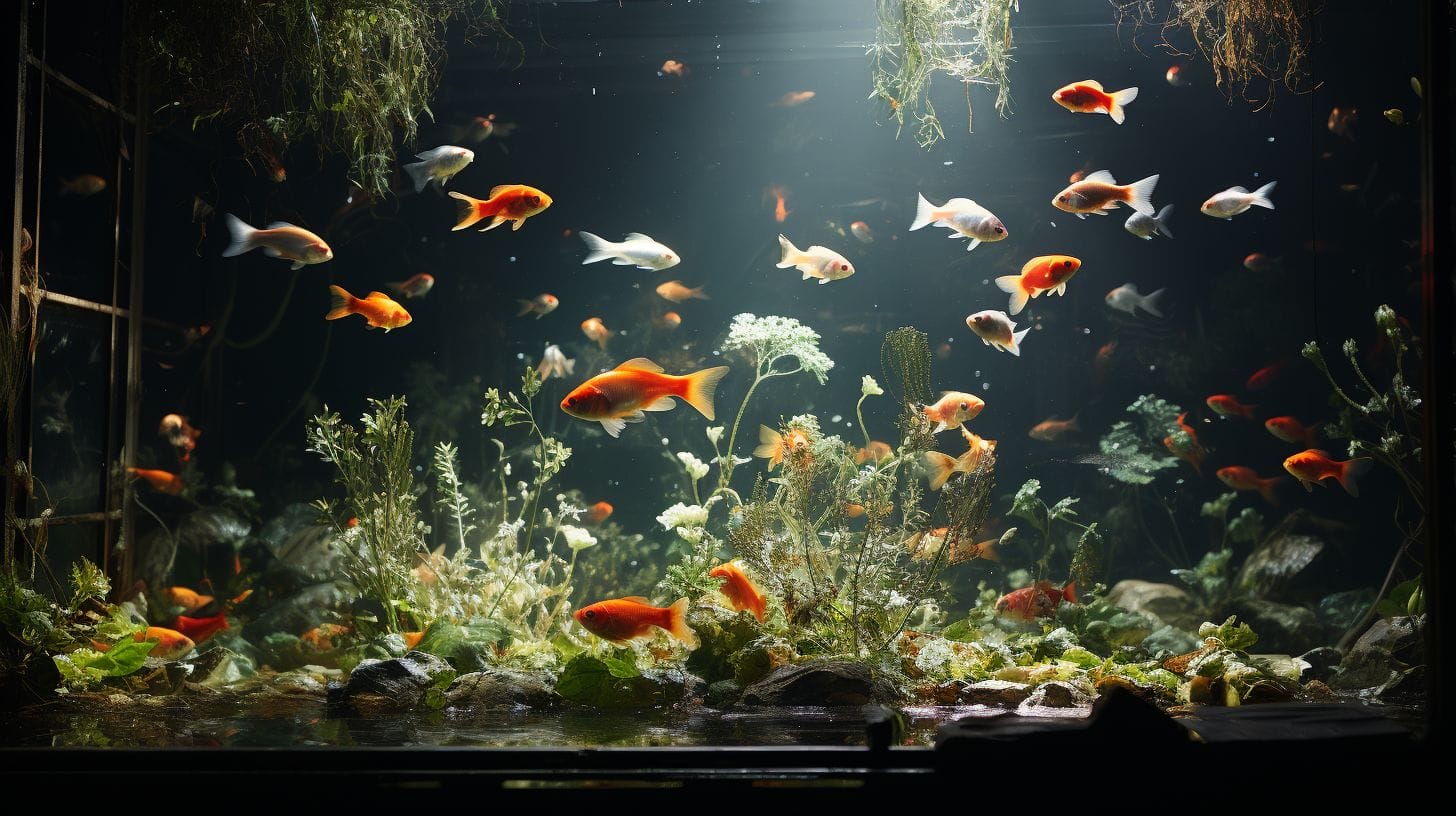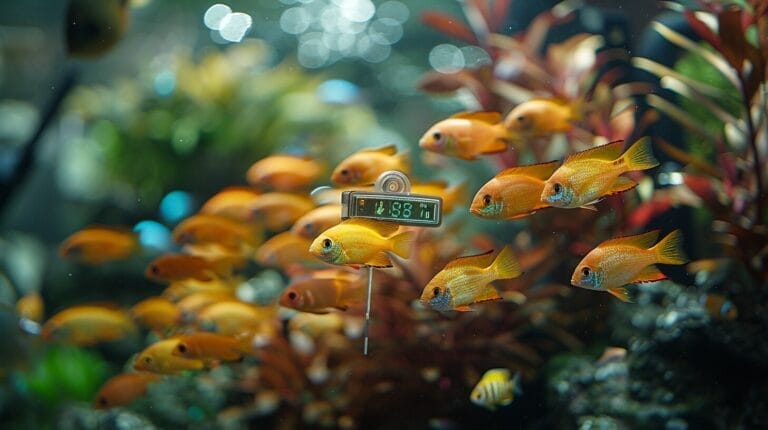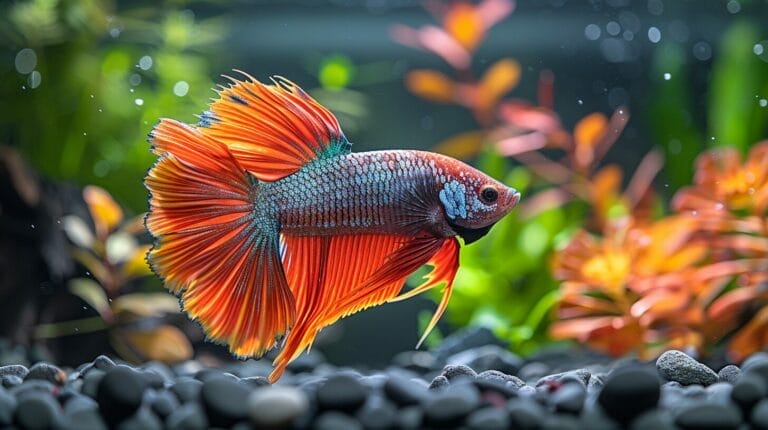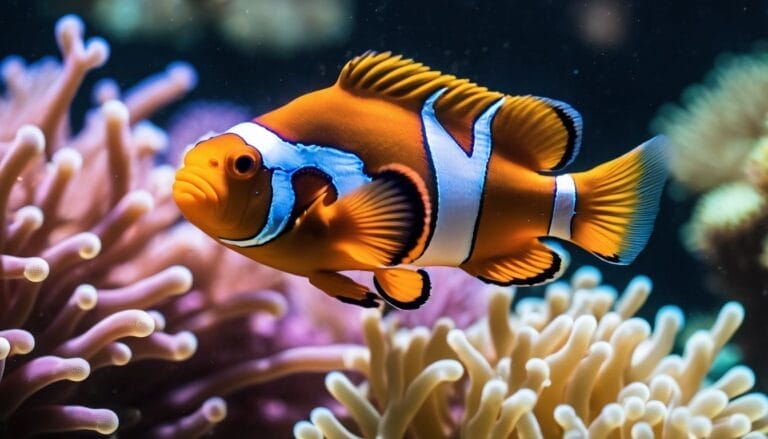Does Aquarium Fish Sleep: Fish Sleep Patterns Explained
Fascinating finned friends fill our aquariums, leading us to wonder: do they sleep? We’re all familiar with sleep as humans, but what about our aquatic companions? As they dart around their watery homes at all hours, it might seem like they’re in constant motion.
However, creatures like catfish and other fish, like most creatures, require periods of rest for their health and well-being. But how does fish sleep compare to ours? Do they dream or need darkness like we humans do? Let’s dive into our ‘Does Aquarium Fish Sleep’ topic and unravel the mysteries of fish sleep patterns.
Key Takeaways
- Fish require periods of rest to maintain their health and well-being.
- Darkness plays a fundamental role in maintaining regular sleep schedules for fish.
- Ensuring adequate sleep for aquarium fish is crucial for their well-being.
- Factors such as environmental conditions, light, and temperature can affect fish sleep patterns.
Understanding Sleep in Aquarium Fish

Unlike us, fish don’t have eyelids to close when they sleep, which might make you wonder, ‘Do fish sleep at night like we do?’ Well, they do, but it’s different. While we tend to think of sleep as a time to close our eyes and drift off, fish sleep in their unique way. They remain motionless, often hovering in one spot or resting on the aquarium floor. This state is their version of sleep.
Just like us, fish have regular sleep schedules. However, instead of relying on the sunrise and sunset, both zebrafish and tilapia aquarium fish species depend on us and our use of an aquarium light on a timer. This simulates the natural light patterns they’d experience in the wild, encouraging them to maintain a regular sleep schedule.
It’s important to remember that each species of fish may have different sleep habits. Some are nocturnal, meaning they’re active at night and sleep during the day. Others are diurnal, active during the day and sleep at night. Understanding their specific needs is crucial for their well-being.
Observing Sleep Behavior of Aquarium Fish
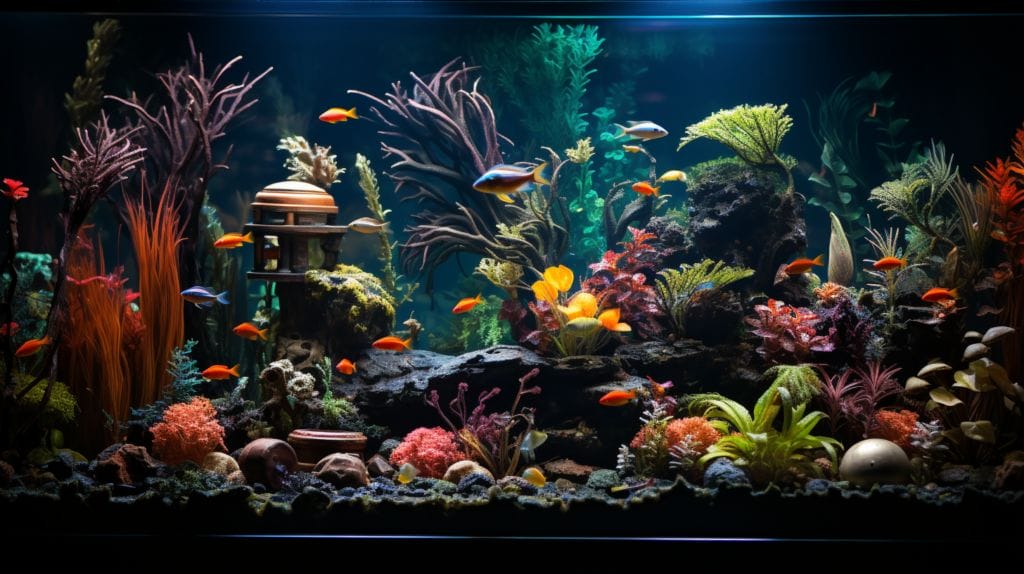
Understanding the concept of fish sleep, it’s crucial to observe their sleep behavior to ensure their well-being. By keeping a keen eye on aquarium fish sleep, we can identify behavior changes, spot different sleep positions, and detect unusual sleep patterns that might indicate health issues.
Changes in behavior: Most fish slow down and find a secluded spot to rest during their sleep period. Some species even change color during sleep. If a fish, be it a Betta, a parrotfish or a gill-breathing shark, is constantly active during regular sleep hours, it may indicate stress or illness.
Sleep positions: Fish sleep patterns vary among species. Some sleep near the surface, others at the bottom, and some even sleep on their sides. Unusual sleep positions, like upside-down sleeping, can indicate a problem and should be addressed.
Unusual sleep behaviors: Persistent sleepiness or lethargy, especially when combined with other symptoms like loss of appetite or color changes, can indicate health issues. If a fish seems unable to sleep or rest, it might be due to inadequate conditions. Adjusting aquarium lights or water temperature could help.
The Importance of Darkness for Sleep in Aquarium Fish
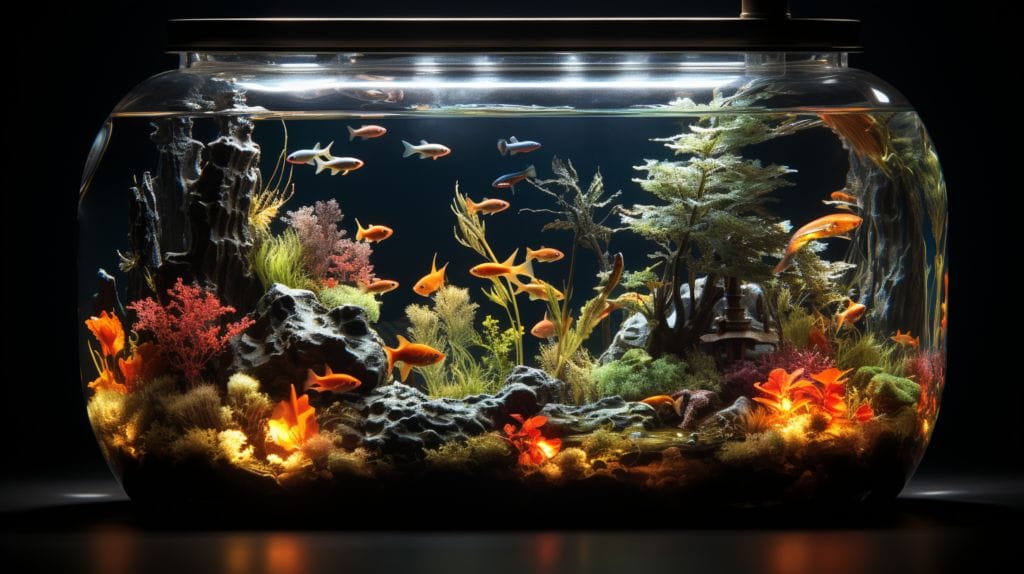
Understanding the role of day and night cycles in regulating the sleep of fish that live in aquariums, such as Betta fish, it’s crucial to recognize the significant benefits that darkness provides. Darkness plays a fundamental role in maintaining regular sleep schedules. By simulating a natural light-dark cycle, we can ensure our fish are sleeping adequately.
Daylight keeps aquarium fish active, their metabolism high, stress low, and promotes growth. However, the importance of darkness shouldn’t be underestimated. It’s when most fish are sleeping, their activity and metabolism decrease, which is necessary for their health. Stress levels may increase slightly, but this is a natural response to darkness in the wild.
Mimicking natural light conditions gives them the freedom to follow their innate sleep patterns. Nocturnal fish, like many other creatures, have a biological clock that responds to light cues. Providing your fish with periods of darkness is about respecting their natural rhythms, promoting their health, and acknowledging the importance of darkness.
Ensuring Your Fish Get Enough Sleep
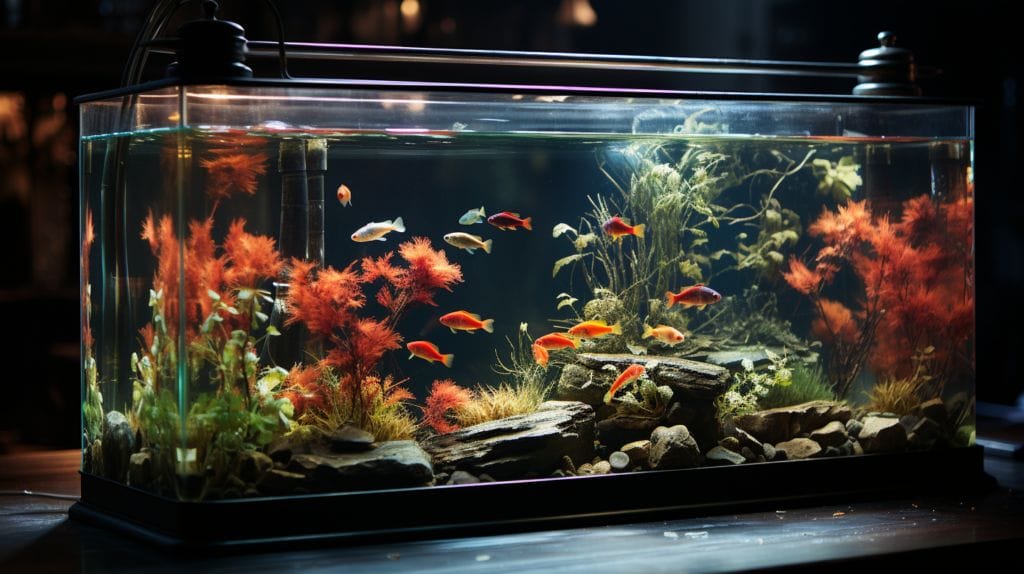
Knowing how to ensure your fish, like catfish and sharks, get enough sleep is a crucial part of maintaining their health and well-being, as they remain active at different times of the day and night.
Sleep deprivation can lead to significant health issues in fish, just as in humans. To tell if your fish are getting enough sleep, observe their behavior. A well-rested fish, be it a shark, parrotfish, or Betta, is active and alert, while a sleep-deprived one might seem lethargic or disoriented.
Creating a sleep-friendly aquarium environment is key. This includes maintaining a consistent light-dark cycle and ensuring the tank is a peaceful, stress-free zone.
Case Studies: Sleep Patterns in Popular Aquarium Fish
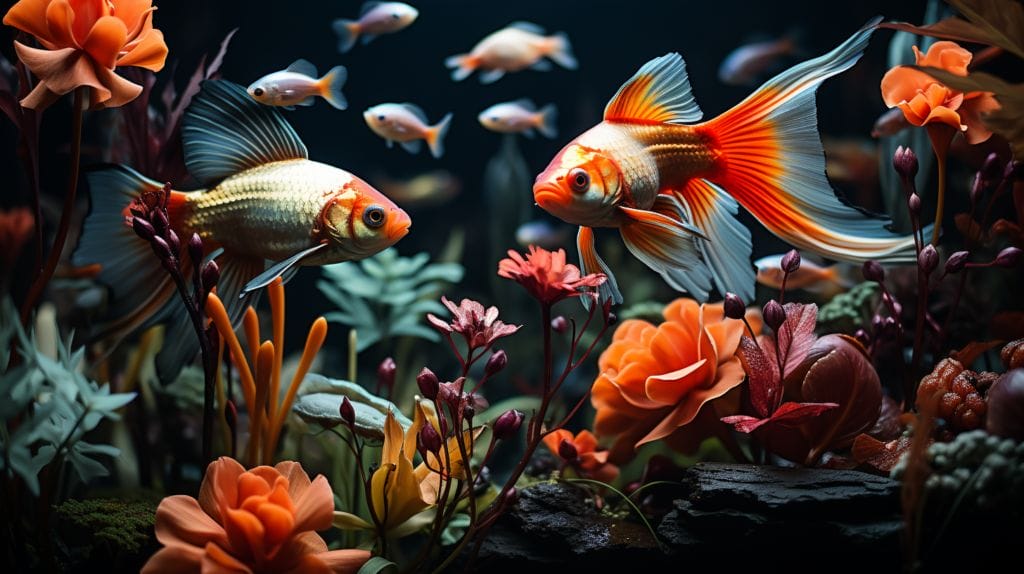
Let’s examine the fish sleep patterns of popular aquarium fish such as Betta fish, Goldfish, Plecostomus, zebrafish and tilapia.
- Betta Fish: Known for their vibrant colors and spectacular fins, Betta fish do sleep, often preferring to do so on a ‘bed’ of leaves or flat surfaces. They change color during sleep, similar to some species of parrotfish, as a response to predator stimulus.
- Goldfish: These popular aquarium fish don’t have eyelids, so they sleep with their eyes wide open.
- Plecostomus: Often referred to as ‘Plecos’, these fish are nocturnal, sleeping during the day and active at night.
Understanding the unique sleep patterns of these aquarium fish helps us respect their freedom to live naturally, even in our controlled environments.
Can the Type of Silicone Used in Aquariums Affect Fish Sleep Patterns?
The type of silicone used in aquariums can impact fish sleep patterns. It’s important to choose the safest silicone for aquariums to ensure that fish are not disturbed by any off-gassing or chemicals leaching into the water. This can help promote a healthy and natural sleep environment for the fish.
Conclusion
So, do aquarium fish sleep? Yes, they absolutely do! Understanding their unique sleep patterns helps us provide them a healthier environment. Remember, darkness is pivotal to their sleep cycle. Ensuring they get enough sleep contributes to their overall well-being.
Observing the sleep patterns in popular aquarium fish can provide insightful information. Let’s care for our finned friends by granting them the quality sleep they need and deserve.
Frequently Asked Questions
Do fish sleep?
Yes, fish do sleep, but their sleep patterns, driven by different levels of brain activity, are different from those of mammals.
How do fish sleep?
Fish can remain motionless at the surface of the water, near the bottom, or hide in caves to rest at night.
Do fish have regular sleep schedules just like humans?
Yes, many fish have regular sleep schedules just like humans and other animals.
How much sleep do fish need?
Although fish sleep differs, they need an adequate amount of sleep to maintain better health.
Do fish experience deep sleep?
Yes, scientists believe that fish experience deep sleep, and some species even exhibit rapid eye movement (REM) sleep.

